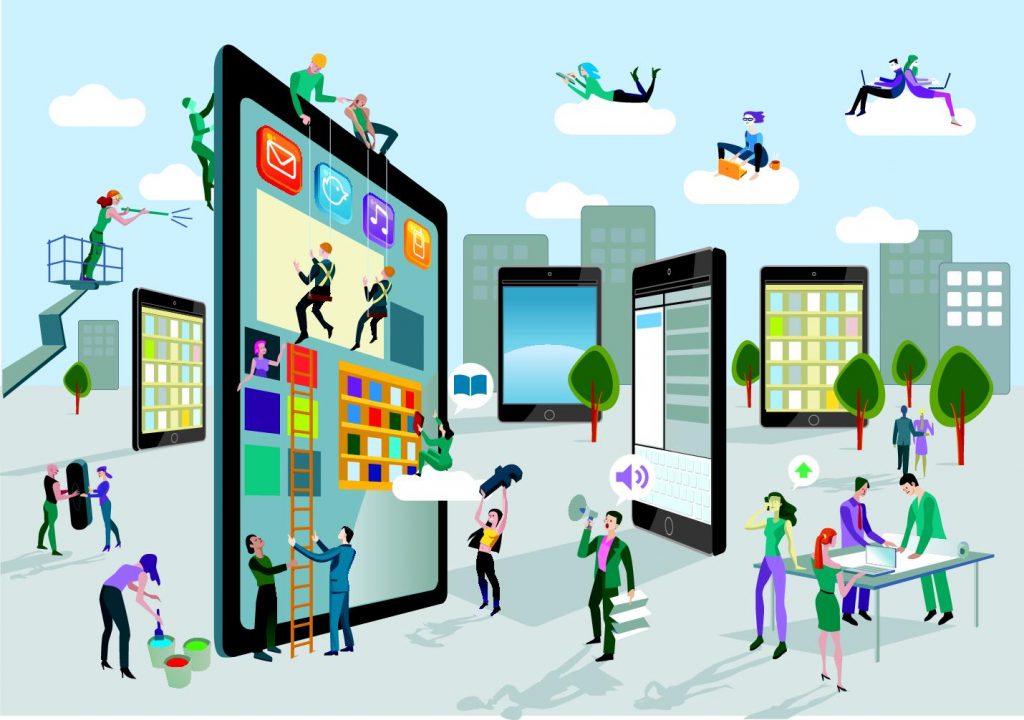How Working Remotely Is Shaping Our Workforce
Written by Shelby Stone
May 23, 2020
 In the last few weeks, there has been a staggering amount of changes in what one might call their “normal” workplace and workforce. Most everyone is working remotely and demonstrating that things that were once considered necessities for doing business aren’t really necessary anymore.
Technology is the key arbitrator in this recent shift, with a company’s use and integration of various ones defining how they’ll be able to conduct themselves and, ultimately, how successful they will be. With this in mind, let’s look at how technology affects and may affect your workplace.
In the last few weeks, there has been a staggering amount of changes in what one might call their “normal” workplace and workforce. Most everyone is working remotely and demonstrating that things that were once considered necessities for doing business aren’t really necessary anymore.
Technology is the key arbitrator in this recent shift, with a company’s use and integration of various ones defining how they’ll be able to conduct themselves and, ultimately, how successful they will be. With this in mind, let’s look at how technology affects and may affect your workplace.
Connectivity/Communication
The connectivity of your workplace and workforce will be the strongest indicator of how well you adapt to changing times. Where once you could simply walk down the hall to deliver something, you’re now presented with numerous options for how to communicate and coordinate your team. Consider some options from our previous blog post about remote work strategies: Will you send an email? Get everyone on Slack? Have a Google Chat and drive going? Get in touch via a Skype message. A group text? A Facebook chat? A Discord server? Google Hangout? GoTo Meeting? Zoom? Skype? Facetime? Will you send a file over Google Drive? DropBox? WeTransfer? Microsoft Onedrive? How do you even choose? What’s important is that you’re affording your remote workplace at the same level of collaboration and creativity. The “always-on” nature of instant messaging platforms can seem intimidating, but with that comes opportunities: frequent feedback and check-ins to ensure the team is on the right track and ease frustrations as they arrive instead of after the fact. Establishing a daily communication strategy and letting your team know how they’re doing and progressing as they work can be a strong motivator that technology both allows and fosters.Working Remotely in your “Office”
Working remotely shouldn’t necessarily be viewed as a downside or a concession you make for your team. In many ways, it is a strong indicator of how interconnected and future thinking your workplace already is. You’re not “adapting to work at home” you’re demonstrating that your workplace/force and team were already highly integrated. Because of this, your team was quickly able to adapt. This is just proof of how prepared and shaped by technology you already were. The benefits of a physical office cannot be discounted outright, but the benefits of the virtual office you may have established are also worthy of praise. You’ve been afforded an opportunity that previous generations of workers and businesses could not take advantage of. Adapt and grow beyond the physical limitations of what constitutes an “office.” You’ve got four walls around you at the office, but so too do you have four walls around you wherever you’re working remotely from.The “Millennial Mindset”
There’s been a lot of talks (not all of it positive) about the idea of Millennials as “self-serving, selfish, unmotivated,” and numerous other negative adjectives. How their idealism and ‘self-centredness” are hindrances in their workplaces. Who doesn’t love a blanket statement? “Where’s he going with this?” you’re asking. Consider this: As millennials are (reportedly) so driven by the search for ‘experiences,’ they look for the tools to get them there and to share. A drive for personal development. High use of technology. A seemingly unending number of ways they combine these and use them together. So it’s because of this that we can put his idea forward: as millennials drive themselves toward “experiences” rather than “goods,” their personal development and growth is a major motivating factors. They’re seeking opportunities to prove themselves, and what better opportunity to provide some sort of ‘proving ground’ than to allow them to integrate their use of technology into their work? Shake off the misconceptions and views mentioned above and let them show you how they adapt to the situation. Provide the feedback and input they seek, set goals, and objectives for them as they work from home. Remove the yoke of constant supervision that may allow their creativity to bloom. Your workplace is evolving, so why not work with the next generation? The current situation isn’t ideal, but making the best of something bad often yields the highest rewards. Don’t let technology shape your workplace; let yourself use technology to shape your workplace. We think you’ll be all the better at it.Categories
Latest Articles
Stay up to date
with news and
educational information
[hubspot type=”form” portal=”5213843″ id=”b19f3e1c-0beb-4946-9d04-2bb47dfa17e0″]
How Working Remotely Is Shaping Our Workforce











Leave a Comment
You must be logged in to post a comment.